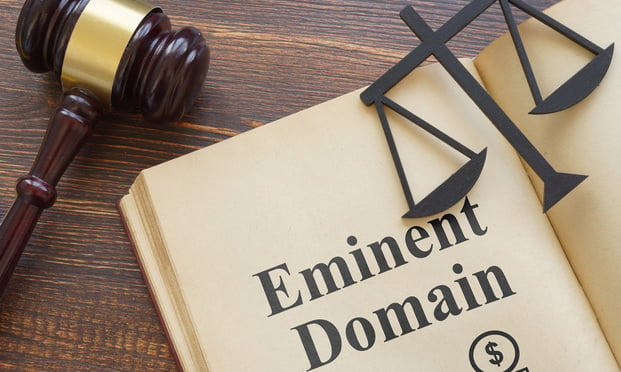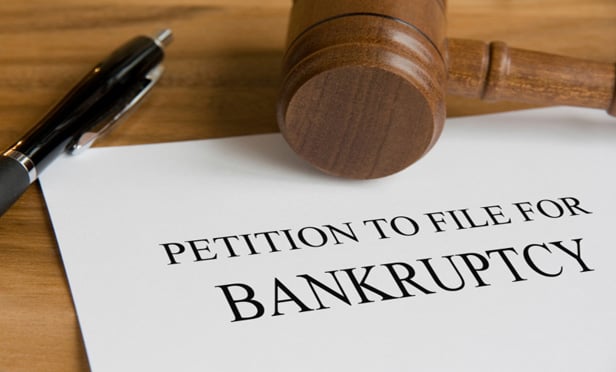Features

When Is A Pretext By A Municipality A Bar To Land Use Approvals?
Recently, there have been several instances in which municipalities have been challenged by property owners claiming that the municipal boards have utilized delaying tactics and other actions as a pretext to prevent development of their properties.
Features

Court of Appeals Addresses Pretext By Municipalities As A Bar to Land Use Approvals?
Recently, there have been several instances in which municipalities have been challenged by property owners claiming that the municipal boards have utilized delaying tactics and other actions as a pretext to prevent development of their properties.
Columns & Departments
Co-Ops and Condominiums
Housing Discrimination Claim Dismissed Co-Op Did Not Breach Shareholder's Guaranty Agreement Co-Op Not Exempt from Lead Paint Mandate
Features

Delaware Bankruptcy Court Rejects Equity Holder's Challenge to Revoke Confirmation Order
The equity owner asserted that the confirmation order previously entered by the court should be revoked based on the equity owner's claim that value was lost due to improper sale and marketing efforts by the debtors and its professionals both pre- and post-bankruptcy and, as such, they should have been "in the money" and entitled to a distribution under the confirmed plan.
Features

Court Caps Landlord's Bankruptcy Claim Against Lease Guarantor
Given that landlord damage claims could overwhelm other creditor claims in a tenant's bankruptcy case, the Bankruptcy Code includes a provision that limits a landlord's claim, which presents challenges for landlords as creditors in bankruptcy cases.
Columns & Departments
Development
Environmental Group Has Standing But Loses On the Merits of Challenge to Subdivision Approval Applicant Entitled to Permit For Small Wireless Facilities
Features

Due Diligence Commercial Leasing Best Practices In New Jersey
Due diligence for CRE loans involves a comprehensive review and analysis of the various conditions and risks associated with the property being mortgaged, with the goal of mitigating such risks to the greatest possible extent before closing the loan.
Columns & Departments
Fresh Filings
Notable recent court filings in entertainment law.
Columns & Departments
Landlord & Tenant Law
Occupation of Premises Does Not Establish Assignment By Operation of Law Amendment to Rent Stabilization Law Is Not Unconstitutional
Columns & Departments
Real Property Law
Summary Judgment Denied On Prescriptive Easement Claim Summary Judgment Denied On Breach of Contract Claim Contract Condition Was For Benefit of Both Parties Statute of Limitations Did Not Bar Claim of Permanent Physical Encroachment
Need Help?
- Prefer an IP authenticated environment? Request a transition or call 800-756-8993.
- Need other assistance? email Customer Service or call 1-877-256-2472.
MOST POPULAR STORIES
- Use of Deferred Prosecution Agreements In White Collar InvestigationsThis article discusses the practical and policy reasons for the use of DPAs and NPAs in white-collar criminal investigations, and considers the NDAA's new reporting provision and its relationship with other efforts to enhance transparency in DOJ decision-making.Read More ›
- The DOJ's Corporate Enforcement Policy: One Year LaterThe DOJ's Criminal Division issued three declinations since the issuance of the revised CEP a year ago. Review of these cases gives insight into DOJ's implementation of the new policy in practice.Read More ›
- The DOJ's New Parameters for Evaluating Corporate Compliance ProgramsThe parameters set forth in the DOJ's memorandum have implications not only for the government's evaluation of compliance programs in the context of criminal charging decisions, but also for how defense counsel structure their conference-room advocacy seeking declinations or lesser sanctions in both criminal and civil investigations.Read More ›
- Lionsgate GC Who Resigned Without 'Good Reason' Got Severance PayAdd another plot twist to the storyline surrounding Corii Berg, who unexpectedly quit as general counsel of the film studio Lionsgate in December, even though he was under contract through June 2023.Read More ›
- Join Us For a Twitter Chat: Do We Need Offices Anymore?When we think about how the COVID-19 pandemic has changed the legal industry, one (frankly huge) question comes to mind: Do we really need offices anymore? As many are still working from home, meeting with clients over Zoom and some even conducting jury trials online, life of commuting to and from work seems farther away than February.Read More ›
